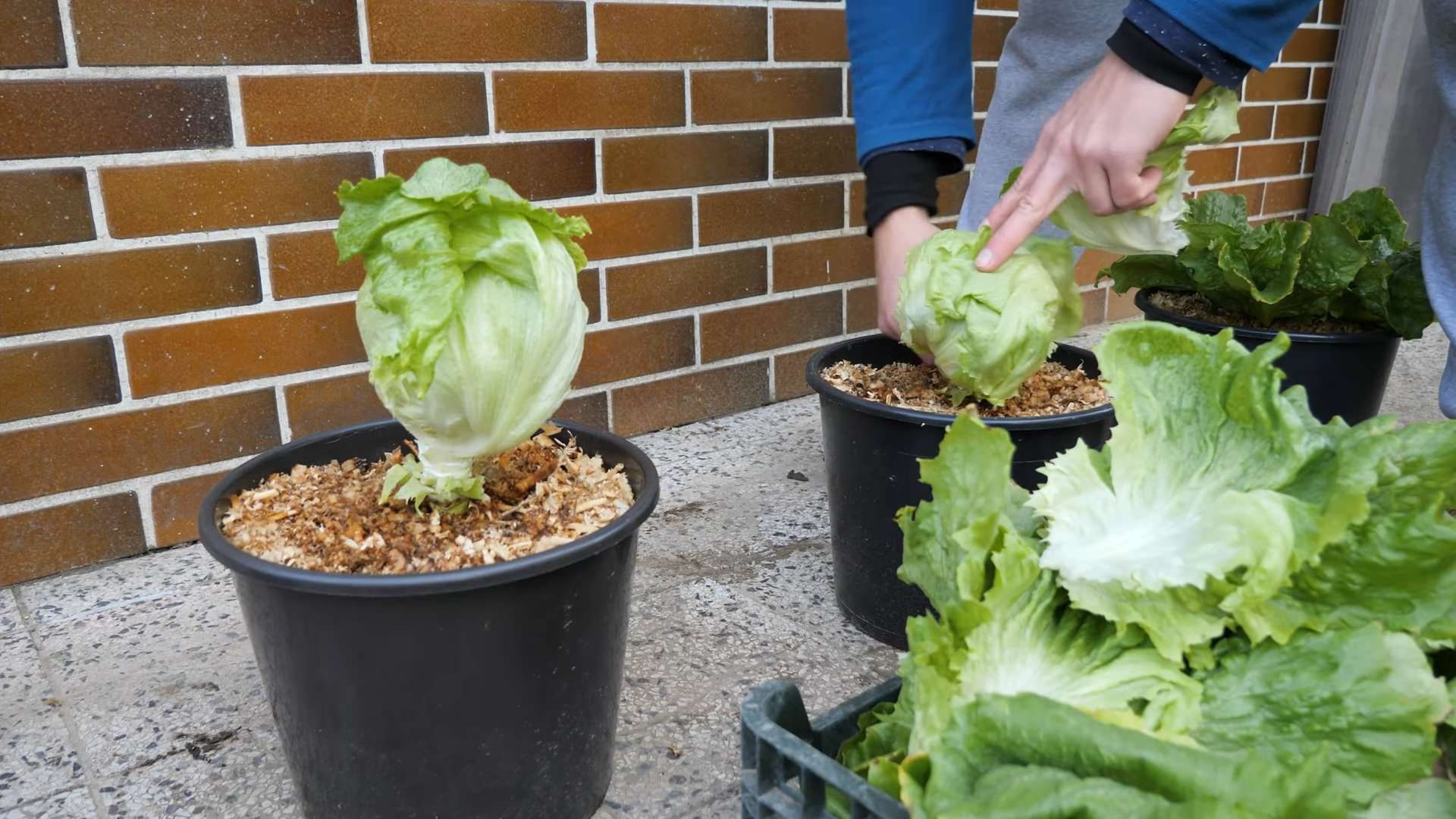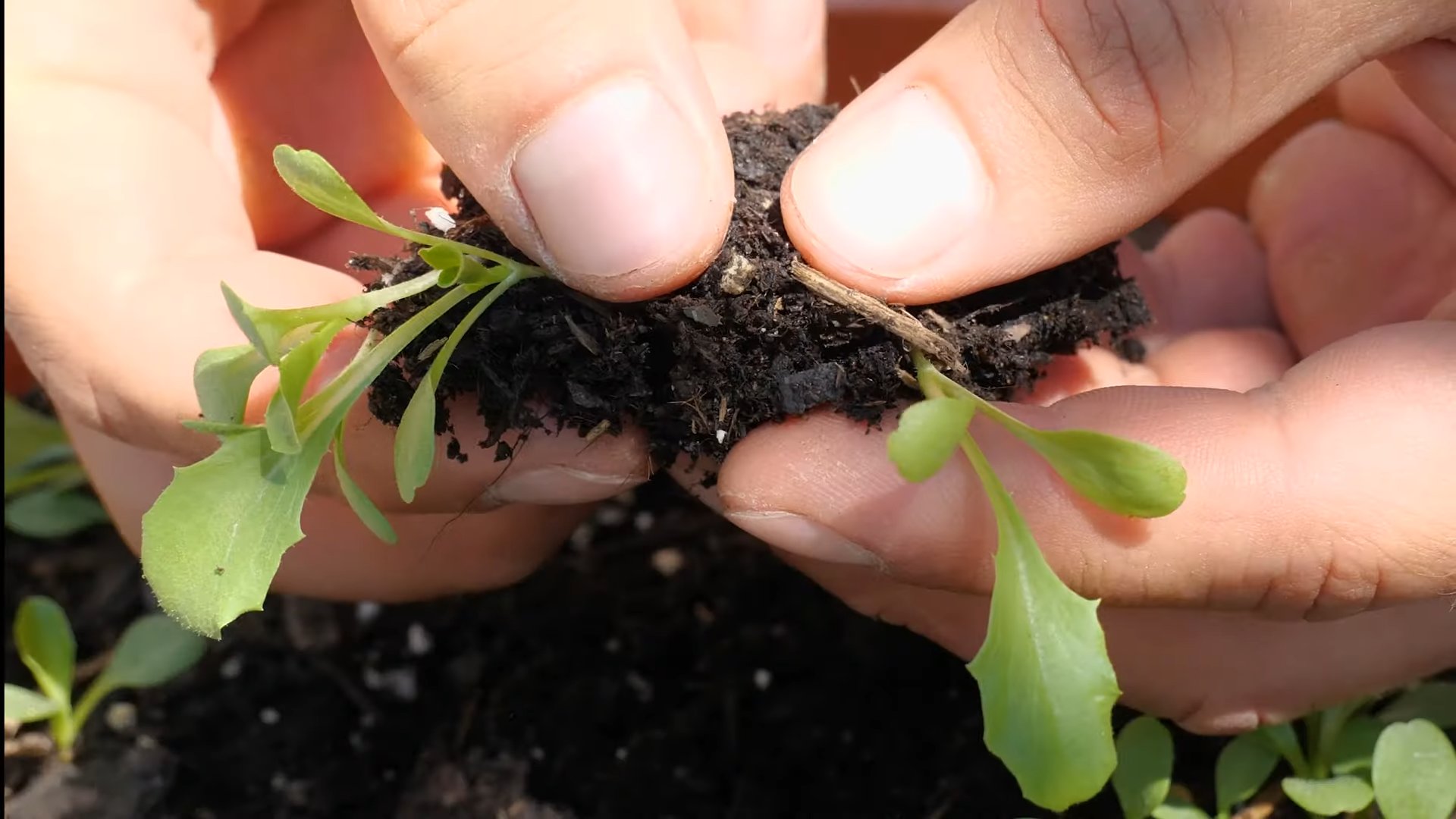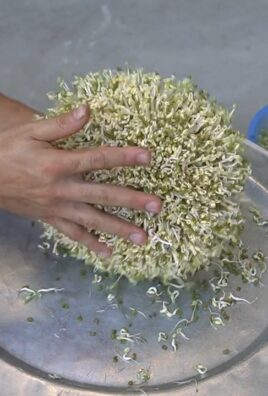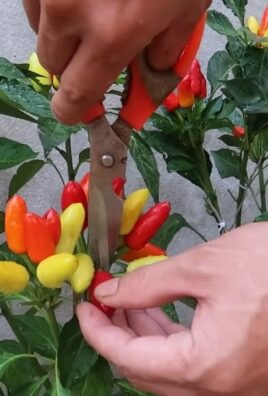Growing Iceberg Lettuce at home might seem like a challenge reserved for seasoned gardeners, but I’m here to tell you it’s totally achievable, even for beginners! Have you ever dreamt of biting into a crisp, refreshing salad made entirely from your own backyard bounty? Imagine the satisfaction of knowing exactly where your food comes from and the joy of sharing your homegrown goodness with friends and family.
Lettuce, in general, has a rich history, dating back to ancient Egypt where it was initially cultivated for its seeds and oil. Over time, the leafy greens became a staple in diets worldwide. While iceberg lettuce might not have the same ancient roots as other varieties, its crisp texture and mild flavor have made it a beloved choice for salads and sandwiches in modern cuisine.
But why bother with the effort of growing iceberg lettuce yourself? Well, store-bought lettuce can often be expensive, and sometimes lacks the freshness and flavor we crave. Plus, by growing your own, you can avoid harmful pesticides and herbicides, ensuring a healthier and more sustainable food source. This DIY guide will provide you with simple, effective tricks and hacks to successfully cultivate your own iceberg lettuce, transforming your garden into a mini-farm and adding a touch of green to your life. Let’s get started!

DIY: Grow Your Own Crisp Iceberg Lettuce at Home!
Hey there, fellow gardening enthusiasts! I’m so excited to share my tried-and-true method for growing crisp, delicious iceberg lettuce right in your own backyard (or even on your balcony!). Forget those flimsy, overpriced heads at the grocery store – with a little patience and these simple steps, you’ll be enjoying fresh, homegrown lettuce in no time.
Choosing the Right Location and Timing
Before we get our hands dirty, let’s talk about setting your lettuce up for success. Iceberg lettuce is a cool-season crop, which means it thrives in cooler temperatures. Bolting (going to seed) is the enemy, and heat encourages it.
* Sunlight: Iceberg lettuce needs at least 6 hours of sunlight per day. If you live in a warmer climate, aim for morning sun and afternoon shade to prevent bolting.
* Soil: Well-draining soil is crucial. Lettuce doesn’t like soggy feet! Amend your soil with compost or other organic matter to improve drainage and fertility. A slightly acidic to neutral pH (around 6.0 to 7.0) is ideal.
* Timing: This is key! I usually start my seeds indoors about 4-6 weeks before the last expected frost. You can also direct sow seeds outdoors a few weeks before the last frost, but indoor starting gives you a head start. For a fall harvest, start seeds in late summer.
* Climate Considerations: If you live in a hot climate, you can still grow iceberg lettuce! Look for heat-tolerant varieties and provide shade during the hottest part of the day. Succession planting (planting new seeds every few weeks) will also help ensure a continuous harvest.
Starting Your Lettuce Seeds (Indoors or Outdoors)
Okay, let’s get those seeds germinating! You have two options here: starting indoors for a head start or direct sowing outdoors. I prefer starting indoors because it gives me more control over the environment and protects the seedlings from pests.
Starting Seeds Indoors
1. Gather Your Supplies: You’ll need seed starting trays or small pots, seed starting mix (not regular potting soil!), iceberg lettuce seeds, a spray bottle, and a grow light (optional, but highly recommended).
2. Sow the Seeds: Moisten the seed starting mix and fill your trays or pots. Sow 2-3 seeds per cell or pot, about ¼ inch deep. Gently cover the seeds with more mix.
3. Water Carefully: Use a spray bottle to gently mist the soil. Avoid overwatering, which can lead to damping off (a fungal disease that kills seedlings).
4. Provide Light and Warmth: Place the trays or pots in a warm location (around 65-70°F) and under a grow light or near a sunny window. If using a grow light, keep it a few inches above the seedlings.
5. Keep the Soil Moist: Check the soil moisture daily and mist as needed to keep it consistently moist but not soggy.
6. Thin the Seedlings: Once the seedlings have their first true leaves (the second set of leaves), thin them to one seedling per cell or pot. Snip off the weaker seedlings at the soil line with scissors. Don’t pull them out, as this can disturb the roots of the remaining seedling.
7. Harden Off the Seedlings: About a week before transplanting outdoors, gradually acclimate the seedlings to outdoor conditions. Start by placing them outside for an hour or two each day in a sheltered location, gradually increasing the time and exposure to sunlight.
Direct Sowing Seeds Outdoors
1. Prepare the Soil: Clear the planting area of weeds and debris. Amend the soil with compost or other organic matter.
2. Sow the Seeds: Sow the seeds about ¼ inch deep and 12 inches apart in rows. Gently cover the seeds with soil.
3. Water Carefully: Water the soil gently but thoroughly.
4. Keep the Soil Moist: Keep the soil consistently moist until the seeds germinate.
5. Thin the Seedlings: Once the seedlings have a few true leaves, thin them to 12 inches apart.
Transplanting Your Lettuce Seedlings
Whether you started your seeds indoors or purchased seedlings from a nursery, transplanting is a crucial step.
1. Prepare the Planting Area: Choose a sunny spot with well-draining soil. Amend the soil with compost or other organic matter.
2. Dig Holes: Dig holes that are slightly larger than the root balls of the seedlings, spacing them about 12 inches apart.
3. Gently Remove the Seedlings: Carefully remove the seedlings from their trays or pots, being careful not to damage the roots.
4. Plant the Seedlings: Place the seedlings in the holes and gently backfill with soil. Make sure the top of the root ball is level with the soil surface.
5. Water Thoroughly: Water the seedlings thoroughly after planting.
6. Mulch: Apply a layer of mulch around the plants to help retain moisture, suppress weeds, and regulate soil temperature. I like to use straw or shredded leaves.
Caring for Your Growing Lettuce
Now that your lettuce is in the ground, it’s time to provide the care it needs to thrive.
* Watering: Water regularly, especially during dry periods. Lettuce needs consistent moisture to grow properly. Aim for about 1 inch of water per week. Water deeply and less frequently, rather than shallowly and often.
* Fertilizing: Lettuce is a light feeder, but it will benefit from a boost of nutrients. I like to use a balanced organic fertilizer or compost tea every few weeks. Avoid over-fertilizing, which can lead to leggy growth.
* Weeding: Keep the planting area free of weeds, which can compete with the lettuce for nutrients and water. Hand-pull weeds carefully to avoid disturbing the lettuce roots.
* Pest Control: Keep an eye out for pests such as aphids, slugs, and snails. I prefer to use organic pest control methods, such as hand-picking pests, using insecticidal soap, or applying diatomaceous earth.
* Bolting Prevention: As I mentioned earlier, bolting is the enemy! To prevent bolting, provide shade during the hottest part of the day, water regularly, and harvest your lettuce before it gets too mature.
Harvesting Your Iceberg Lettuce
The moment we’ve all been waiting for! Harvesting your own homegrown iceberg lettuce is incredibly rewarding.
1. Timing: Iceberg lettuce is ready to harvest when the head is firm and feels solid when gently squeezed. This usually takes about 70-80 days from seed.
2. Harvesting Method: Use a sharp knife to cut the head of lettuce from the base of the plant. Leave about an inch of the stem attached.
3. Storage: Store the harvested lettuce in the refrigerator in a plastic bag or container. It will keep for about a week.
Troubleshooting Common Lettuce Problems
Even with the best care, you might encounter some problems along the way. Here are a few common issues and how to address them:
* Bolting: As we’ve discussed, bolting is when the lettuce plant sends up a flower stalk and the leaves become bitter. Prevent bolting by providing shade, watering regularly, and harvesting before the weather gets too hot.
* Aphids: These tiny pests can suck the sap from lettuce leaves, causing them to become distorted and yellow. Control aphids by spraying with insecticidal soap or releasing beneficial insects like ladybugs.
* Slugs and Snails: These slimy pests can munch on lettuce leaves, leaving holes and slime trails. Control slugs and snails by hand-picking them, using beer traps, or applying diatomaceous earth.
* Damping Off: This fungal disease can kill seedlings, especially in overly moist conditions. Prevent damping off by using a well-draining seed starting mix, avoiding overwatering, and providing good air circulation.
* Tipburn: This condition causes the edges of lettuce leaves to turn brown and die. It’s usually caused by calcium deficiency or inconsistent watering. Prevent tipburn by ensuring the soil is rich in calcium and watering regularly.
Choosing the Right Variety
While we’re focusing on iceberg lettuce, there are actually different varieties within the iceberg family! Some are more heat-tolerant than others, and some mature faster. Do some research to find a variety that suits your climate and growing conditions. Some popular choices include ‘Great Lakes’ and ‘Ithaca’.
Extending Your Harvest
Want to enjoy fresh lettuce for as long as possible? Here are a few tips:
* Succession Planting: Plant new seeds every few weeks to ensure a continuous harvest.
* Cut-and-Come-Again Harvesting: Instead of harvesting the entire head of lettuce, you can harvest individual leaves as needed. This will allow the plant to continue growing and producing new leaves.
* Cold Frames or Row Covers: Use cold frames or

Conclusion
So, there you have it! Growing your own iceberg lettuce isn’t just a fun gardening project; it’s a gateway to fresher, tastier salads and a more sustainable lifestyle. We’ve walked you through the process, from seed to harvest, and hopefully demystified any concerns you might have had about cultivating this cool-weather crop.
The real beauty of this DIY trick lies in its simplicity and the sheer satisfaction of nurturing something from a tiny seed into a crisp, leafy head of lettuce. Imagine the pride you’ll feel serving a salad made with iceberg lettuce you grew yourself! Plus, you’ll know exactly where your food comes from and what (or rather, what *isn’t*) in it. No more worrying about pesticides or long-distance transportation.
But don’t stop there! Experiment with different varieties of iceberg lettuce. Some are more compact, perfect for smaller gardens or containers. Others boast slightly different flavors and textures. You can also try succession planting, sowing seeds every few weeks to ensure a continuous harvest throughout the growing season. Consider companion planting too! Marigolds can help deter pests, while carrots can improve soil conditions.
And if you’re feeling adventurous, why not try growing other types of lettuce alongside your iceberg? A mix of textures and flavors will elevate your salads to a whole new level. Think about adding some romaine for a bit of crunch, butter lettuce for a delicate sweetness, or even some spicy arugula for a peppery kick.
Ultimately, the best way to learn is by doing. So, grab some seeds, prepare your soil, and get ready to experience the joy of growing your own iceberg lettuce. Don’t be afraid to make mistakes – that’s how we all learn! And most importantly, have fun with it.
We’re confident that once you taste the difference between store-bought and homegrown iceberg lettuce, you’ll be hooked. It’s a simple pleasure that brings a touch of nature to your table.
We encourage you to try this DIY trick and share your experiences with us! Let us know what worked well for you, what challenges you faced, and any tips or tricks you discovered along the way. Share your photos and stories on social media using #HomegrownIcebergLettuce – we can’t wait to see your beautiful lettuce gardens! Your insights could help other aspiring gardeners embark on their own iceberg lettuce growing adventures. Happy gardening!
Frequently Asked Questions (FAQ)
What is the best time of year to plant iceberg lettuce?
Iceberg lettuce thrives in cool weather, so the best time to plant it is in early spring or late summer/early fall. Avoid planting during the hottest months of summer, as the heat can cause the lettuce to bolt (go to seed), resulting in bitter-tasting leaves. For a spring crop, start seeds indoors 6-8 weeks before the last expected frost. For a fall crop, sow seeds directly into the garden in late summer, about 8-10 weeks before the first expected frost. Check your local frost dates to determine the optimal planting times for your region.
How much sunlight does iceberg lettuce need?
Iceberg lettuce needs at least 6 hours of sunlight per day to grow properly. However, in hotter climates, providing some afternoon shade can help prevent bolting. If you’re growing lettuce indoors, use grow lights to supplement natural sunlight. Ensure the lights are positioned correctly to provide adequate coverage and intensity.
What kind of soil is best for growing iceberg lettuce?
Iceberg lettuce prefers well-drained, fertile soil with a pH between 6.0 and 7.0. Amend your soil with compost or other organic matter to improve drainage and fertility. A slightly acidic soil is ideal. You can test your soil pH with a home testing kit and adjust it accordingly with lime (to raise pH) or sulfur (to lower pH).
How often should I water iceberg lettuce?
Water iceberg lettuce regularly, keeping the soil consistently moist but not waterlogged. Water deeply at the base of the plants, avoiding wetting the leaves, which can promote fungal diseases. Check the soil moisture regularly, especially during hot or dry weather. Mulching around the plants can help retain moisture and suppress weeds.
How do I prevent iceberg lettuce from bolting?
Bolting is a common problem with iceberg lettuce, especially in hot weather. To prevent bolting, choose bolt-resistant varieties, provide afternoon shade, and water regularly. Harvest the lettuce as soon as it reaches maturity. You can also try planting lettuce in a location that receives morning sun and afternoon shade.
What are some common pests and diseases that affect iceberg lettuce?
Common pests that affect iceberg lettuce include aphids, slugs, snails, and cutworms. Common diseases include downy mildew, powdery mildew, and lettuce mosaic virus. Inspect your plants regularly for signs of pests or diseases and take appropriate action. Use organic pest control methods whenever possible, such as insecticidal soap or neem oil. Ensure good air circulation around the plants to prevent fungal diseases.
How do I harvest iceberg lettuce?
Harvest iceberg lettuce when the head is firm and well-formed. Use a sharp knife to cut the head at the base of the plant. You can also harvest individual leaves as needed, but harvesting the entire head at once is generally recommended for iceberg lettuce.
Can I grow iceberg lettuce in containers?
Yes, you can grow iceberg lettuce in containers. Choose a container that is at least 12 inches deep and wide. Use a well-draining potting mix and water regularly. Place the container in a location that receives at least 6 hours of sunlight per day. Container gardening is a great option for those with limited space or poor soil conditions.
How do I store iceberg lettuce after harvesting?
After harvesting, wash the iceberg lettuce and dry it thoroughly. Wrap the head in a paper towel and store it in a plastic bag in the refrigerator. Iceberg lettuce can be stored for up to a week in the refrigerator.
What are some good companion plants for iceberg lettuce?
Good companion plants for iceberg lettuce include carrots, radishes, onions, garlic, and marigolds. Carrots and radishes help to loosen the soil, while onions and garlic deter pests. Marigolds also help to deter pests and attract beneficial insects. Avoid planting lettuce near fennel, as it can inhibit its growth.
Is homegrown iceberg lettuce more nutritious than store-bought?
While the nutritional content can vary depending on growing conditions, homegrown iceberg lettuce is often more nutritious than store-bought lettuce because it is fresher and hasn’t been subjected to long-distance transportation and storage. You also have control over what goes into the soil, ensuring that your lettuce is grown without harmful pesticides or chemicals.
Can I save seeds from my iceberg lettuce plants?
Saving seeds from iceberg lettuce can be challenging, as it requires allowing the plant to bolt and go to seed. However, if you’re interested in saving seeds, choose an open-pollinated variety and allow a few plants to bolt. Collect the seeds after the seed heads have dried and store them in a cool, dry place. Keep in mind that the seeds may not produce plants that are true to type, especially if the lettuce was cross-pollinated with other varieties.




Leave a Comment